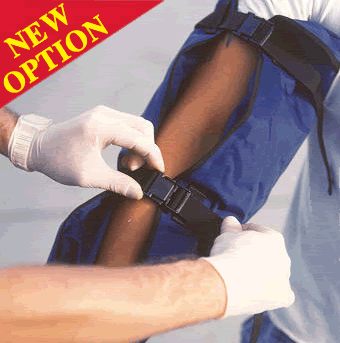 |
| 1. rigid splint |
 |
| 3. traction splint |
 |
| 4. sling & swathe |
 |
| 5. improvise splint |
 |
| 6. anatomical splint |
General rules for splinting:
1. Always communicate your plans with your patient, if possible ask permission.
2. Before immobilizing an injured extremity expose and control bleeding.
3. Always cut away clothing around the injury site before immobilizingthe joint.Remove all jewellery from the site and below it.
4. Assess pulse, motor function and sensation (PMS).
5. If limb is severely deformed or distal circulation is compromised (cyanosis) Distal to fracture site or no distal pulse, align the bone with gentle tractioning (pulling). If pain or creptus worsen, discontinue. Always follow local protocol.
6. Do not attempt to push protruding bone end back intoplace. However, when realigning may slip back into place. Make a note if this occurs.
7. For patient's comfort and proper immobilization, pad voids between the body and the splint, since many rigid splints do not conform to body curves.
8. Pad the splint before applying it.
9. If a joint is injured, immobilize it and the bones above and below.
10. Splint as you found it.





